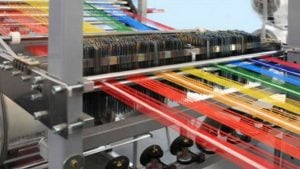After exposure of a number of scams in the last few months, the effects were largely seen on the markets. Stocks of the respective industries were hit severely and are still struggling to bounce back.
On this, Raamdeo Agrawal, Co-Founder, Motilal Oswal Financial Services said that 2018 was going to be a year of correction.
“Nobody knew that Punjab National Bank (PNB) scam would happen. Market was overextended in terms of valuations and earnings were not catching up, so these are the triggers for correction”, he added.
Below is the verbatim transcript of the interview.
Anuj: Tell us what is happening in the market right now, is this one of those sharp bull market corrections or has something changed for equity markets?
Agrawal: No, nothing has changed. Just that we had wonderful three years. So we had to give in reversion to mean. Why it comes? It finds its own reason, nobody knew this PNB scam will happen. You are the one who keeps finding out what are the risks, look at your own tape three-four months back, you never mentioned that there could be a PNB scam. So the risk has a way to find – we are all in the market place. Just that market was overextended in terms of valuation and earnings were not catching up, there were a lot of issues, so these are triggers for correction and if you see the correction, there are a lot of winners also in this period. There are a lot of losers of course impacted by this scam and all but a lot of the stocks are doing well.
Good thing is that, at this point of time, lot of segments of the economy are firing well.
Latha: That is the point, we have got that good index of industrial production (IIP) number.
Agrawal: Trade offtake which is a broader possible thing that has picked up. You will see the kind of boom that is automotive segment is going – more particularly the high-end commercial vehicles (CV) and all, so it is spreading. It will spread but valuation has already captured a lot of it.
Latha: That is what I was going to ask you. Even just now we had Thermax’s Unnikrishnan speaking with us, saying that for the first time he is getting capex orders from consumers, from capital goods kind of companies as well as from infrastructure. So except for power, he said everything else is giving orders. It all that captured or at least will it put a bottom to the market?
Agrawal: There will be correction. It should better correct and then we have this political headwind. People don’t talk enough about it but there are so many elections, I think four-five major states are going through poll and every poll is considered as general election and then finally you have the big one in May.
Latha: After May, we don’t have – Karnataka in May, after that there is a gap for about six months.
Agrawal: So it will allow the markets to recover. If you look at year-on-year, I think it will be a nice year of correction. Then the stage is set with the new government for whatever happens.
Sonia: You did say that sentiment has been hit – bank scam is something that nobody was prepared for but sentiment has been hit. What do you see as a solution, is there any solution to this mess?
Agrawal: It is a political bosses who have to take the call but some of the low-hanging fruit without doing prioritisation very radical politically possible or not but even given constraint of HR practices you have but why cannot you have a little younger guy or even the old guy but give him 5-10 years kind of tenure. Even State Bank of India (SBI) gets three-years, two-years kind of tenure, Arundhati Bhattacharya who just retired, has got three and a half years.
Latha: That too after the extension, her original term was only two and a half years.
Agrawal: So I think if you give five years at least and then another five – because this is a crisis time at least this is a crisis solution, you give it to a good CEO and finding those many CEOs should not be that difficult. Of course everything is difficult but find the CEOs and give them five-year tenure, seven-year tenure so they can plan something and execute.
Anuj: You think this year is going to be tough. Last year of course we had the midcap index rallying for 44-45 percent, again this year we could have negative on the index but still lot of stocks doing well?
Agrawal: Stocks will definitely do well. That you cannot stop but when it comes to discussion on index, there are so many things going up and down. So I would think that plus-minus 10 percent from here is a good number to get.
Anuj: You always say that look at the downside, upside will take care of itself, so what is the downside?
Agrawal: Downside is 10 percent.
Anuj: From here?
Agrawal: I would think so. One should be prepared for that much and with a high probability that much NAV loss in your portfolio should happen even if it is a very well managed portfolio.
Sonia: You spoke about signs of the pick-up that we are seeing in terms of the IIP data and the auto etc, how do you play on this theme, capex cycle recovery and how will that result in terms of earnings recovery as well?
Agrawal: One is the market. So we don’t look at the market. We look at our portfolio. So portfolio will keep buying what we think is right. So if we think that okay, there is a massive boom picking up in commercial vehicles (CV), so we will see if we can find some inclusion in our portfolio is that 3-4 percent position left, we will buy one of the commercial vehicle companies. There are not too many, India is blessed with – number one is always 50 percent and number two is 25-30 percent. So you have a good chance of picking up a leader in this kind of situation. So you buy one of them and then go on to see, is there anything else which is looking very good. So for segment like in the entire automotive, we might be having 20-25 percent allocation. So it may change 4-5 percent.
Latha: The NBFC space itself was the big leader of last year. This year will things get very tough? We have seen the stock market tell you that margins are under pressure but how will it likely pan out?
Mistry: My sense is interest rates have gone up and that is very obvious but at the same time you have got people look at interest rates the way they are today and compare it the way interest rates were 6-12 months ago, but if you look two years back, actually interest rates are lower than what they were two years ago. Interest rates in India started coming down from July 2016 and then in a big way post demonetisation in November 2016. So any liability today, for example for NBFC which is maturing which is two years old that liability is replaced at a cost which is lower than the original cost, but if it is a one year liability, if it’s a short-term liability and that is getting replaced today then that is getting replaced at a higher rate. So it depends on the asset liability profile of each NBFC.
Latha: So all the more reason when you are choosing NBFC you would look at Asset Liability Managements (ALMs) more important and therefore in this category stick with the best. How will you approach this category?
Agrawal: As Mr. Mistry is saying interest rate is not that much of a concern. When we look at NBFC or any bank. One of the thing is quality of underwriting and what has been the history of it and what the rating agencies are saying and what the companies are saying and what is connect and disconnect. So long as quality of underwriting is good then we look at spreads; what is the cost of borrowing, what lending rates is and what is the leverage because the leverage can change everything. Like HDFC would be far more conservative in terms of leverage compared to other NBFCs which might be 10-11-12 times, so a combination of all that and actually old history; what has been the track record and is their book seasoned, what are the return on equity (RoE), what are the payouts, what are the growth rates, all these combination gives us some kind of sense of value.
Sonia: The other thing I wanted to discuss is affordable housing, we spoke about that and that was a big theme of last year. You saw almost 20 percent jump in your assets under management (AUMs) boosted by affordable housing. Is that going to still be the theme over the next two years?
Mistry: I would believe so. Housing is a long drawn project so if once the boost is given to the housing sector it takes a while before it translates into disbursements because a builder has to first buy land and after that he has to prepare a project plan, get the plan approved and then start constructing and that is the time he will borrow money. So the real growth driver comes in over a period of two or three years, not immediately but since you talked about interest rates, I just want to add one bit there, we are looking at interest rates today and saying rates have gone up a lot but historically if you go back to the last 15-20 years barring maybe 2017 which was impacted because of demonetisation and maybe 2009 which was impacted because of the Lehman crisis. Every year you will see interest rates go extremely high in February and March and then tend to come down in April. There are two reasons for that. The first reason is that the government’s fiscal year, as we know, is April to March and a very significant part of the government’s expenditure budget is spend by the time we come to December-January. So the amount of government spending in February and March reduces which then reduces the inflow of liquidity in the system and the other reason is that 40 percent of the taxes of the year get paid on March 15th irrespective whether you are an individual, company or whatever you are. So huge amount of liquidity gets sucked out of the system. So February and March are two months where liquidity is tight because infusion of liquidity is less and existing liquidity gets sucked out.
Anuj: To extend the point that Sonia was making, we had a big growth last year in housing. A lot of these new age NBFCs, housing finance companies have got a lot of their profit from loan against property (LAP) book. Do you think we have built some excesses, I mean some people say even India is subprime, I am not going to that extend but are there excesses in the system?
Mistry: We have believed and we have mentioned this in one of our annual reports in the past that we are little concerned with the way loans against properties were been given in the system because these loans against properties are being, some of them are being let’s be clear this is not every case but in some cases, where the loan against properties been given based on the value of the property based on valuation certificate rather than based on the repayment capacity of the individual. And any lending which you do which is only asset backed and not backed by income is a cause for concern. I am not saying everyone is doing that but in a small way that is happening.
Latha: There were some housing finance companies which were reporting 35-40 percent loan growth in some quarters last year. How would you separate the wheat from the chaff in the housing finance space? Are there more ambushes that you should worry about, places you will stay away?
Agrawal: When you are lending; I think lending has to be with a lot of calibration and on a high base if you grow at high rate then the organisations are not structured to take care of that because giving money is easy but calling it back, immediately you have to start getting the EMIs on time. If it is not in that case then you know the stringency of the entire declaration. So it comes to be shown in the books because numerator-denominator – when you keep growing at very rapidly the base the calculation of gross non-performing asset (NPA) also becomes much easier but eventually by law of property you will end up underwriting badly if you grow at very rapid pace and in lending this is the biggest problem; what we are seeing today is a colossal bad underwriting in the system and that is coming to haunt the entire nation now.
Sonia: You did say that affordable housing growth comes with a bit of a lag so the next two-three years would look good. What are we looking at in terms of growth? Is it like put together affordable and retail home finance is like 15-20 percent or can we look at better?
Mistry: It is very difficult to give a number to these things because the base changes. It depends a lot on what the base is but if you look at this year, for example look at the period up to December, we have grown our individual loan book on a balance sheet basis by 19 percent and on AUM basis by 17 percent. This is at least a couple of percentage points higher than what would have been but for the trust that has come on affordable housing. So I would say 2-3-4 percent additional spurt in the growth is something that one can perhaps hopefully see.
Raamdeo: One of the things is that the longevity of growth – one of the remarkable thing about HDFC and HDFC as a group is that right from 1971 when you started making first profit of a crore, you have been making last you made up about Rs 11,100 crore only in HDFC, how to think about longevity from here?
Mistry: I would look at it like the demand for housing in India is very structural in nature. There are four reasons why the demand for housing in India is strong and in my sense will continue to remain strong with a very long-term view. The first is that housing has become a lot more affordable than what it used to be 10-15-20 years ago and that has happened because property prices may have risen over time, income levels have risen faster than property prices and therefore, affordability has improved.
The second reason is that the penetration of mortgages in India is extremely low. The mortgage to gross domestic product (GDP) ratio in India stands at 9 percent. You compare that to the US which is 63 percent, UK which is 68 percent, but let us forget the West, let us talk about countries closer to home, let us talk of China. China is 22 percent and India is 9 percent. So the penetration level is very low and that overtime will increase.
The third is the government thrust on housing and that has reflected in two things, two ways where they are encouraging people to buy houses, one is fiscal benefits. Interest is tax deductible upto Rs 2 lakh, principle is tax deductible upto Rs 1.50 lakh then there is a subsidy scheme, which is available, subsidy scheme is also a big booster, that is what this whole affordable housing theme is all about.
The fourth fact – and according to me a very important fact – is that in India we have a young population. Two-thirds of our population is below 35 years of age and unlike the West, in India we do not buy house when they are in their 20s. So the average age of a first time home buyer is about 37-38 years, which means two-thirds of the population today has not even contemplated, not even thought of buying a house. But over the next 10-20 years, the structural demand for housing in India will always remain strong. So I am bullish about growth with a long-term view.
Latha: Is it likely that we will be inviting you in ten days for an acquisition?
Mistry: Which acquisition.
Latha: You tell us.
Mistry: I have no idea what you are talking about.
Latha: We just heard that there are six-seven bids for Can Fin Homes. We had the Canara Bank management. Will acquisition be important? You said you have raised money for acquisition?
Mistry: No, we have raised money for growth. So out of the Rs 13,000 crore that we have raised, Rs 8,500 crore will straight go into the bank. So the bulk of the money that we have raised will go as equity in the bank. Then we said we will look at health insurance. Health insurance – we can look at either organic growth or inorganic growth. If there is inorganic growth then it will require, money will flow straightaway. Third thing is the acquisition in housing finance if good opportunities come up but you must understand, with our base and size, Rs 3 lakh crore, buying over a company with Rs 10,000-15,000 crore is not going to move the needle much.
If something like that was to come up, we will look at the opportunity.
Sonia: Are you looking for any stressed assets in the real estate segment because everyone is talking about that?
Mistry: No, not really. We said that we would like to look at the stressed asset business because we have to look at the expertise in real estate, we understand real estate markets, we understand housing markets but we would do it through a separate entity.
So either it would be a fund structure or it would be a separate company, a separate NBFC structure.
Raamdeo: How do you think about the size, you are already 2 percent of GDP, almost more than 3 lakh crore book, if the total mortgage book grows by 20 percent of expanded GDP, so obviously the growth will be 22-23 percent going forward for the industry, you think the HDFC can become a 6 lakh or 10 lakh crore?
Mistry: Growth is compounded growth. Obviously the largest the scale, the lesser will be the percentage growth. Logically that has to happen. If your balance sheet size is Rs 20,000 crore and your balance sheet size is Rs 3 lakh crore, your percentage cannot be compared.
But because of the structural thing that I talked about, my sense is that the demand for housing in India will always remain strong.
Raamdeo: It will still grow but where is the constraint at the company level?
Mistry: There is no constraint. We have the people in place, the resources are not a problem, the availability of funds is not an issue, the knowledge of markets is there. So there will be growth but we would grow carefully, lending is very easy, recovery is more difficult. We have to make sure that we are lending money which is going to be recovered.











 Listen to the Article
Listen to the Article 
 Daily Newsletter
Daily Newsletter











